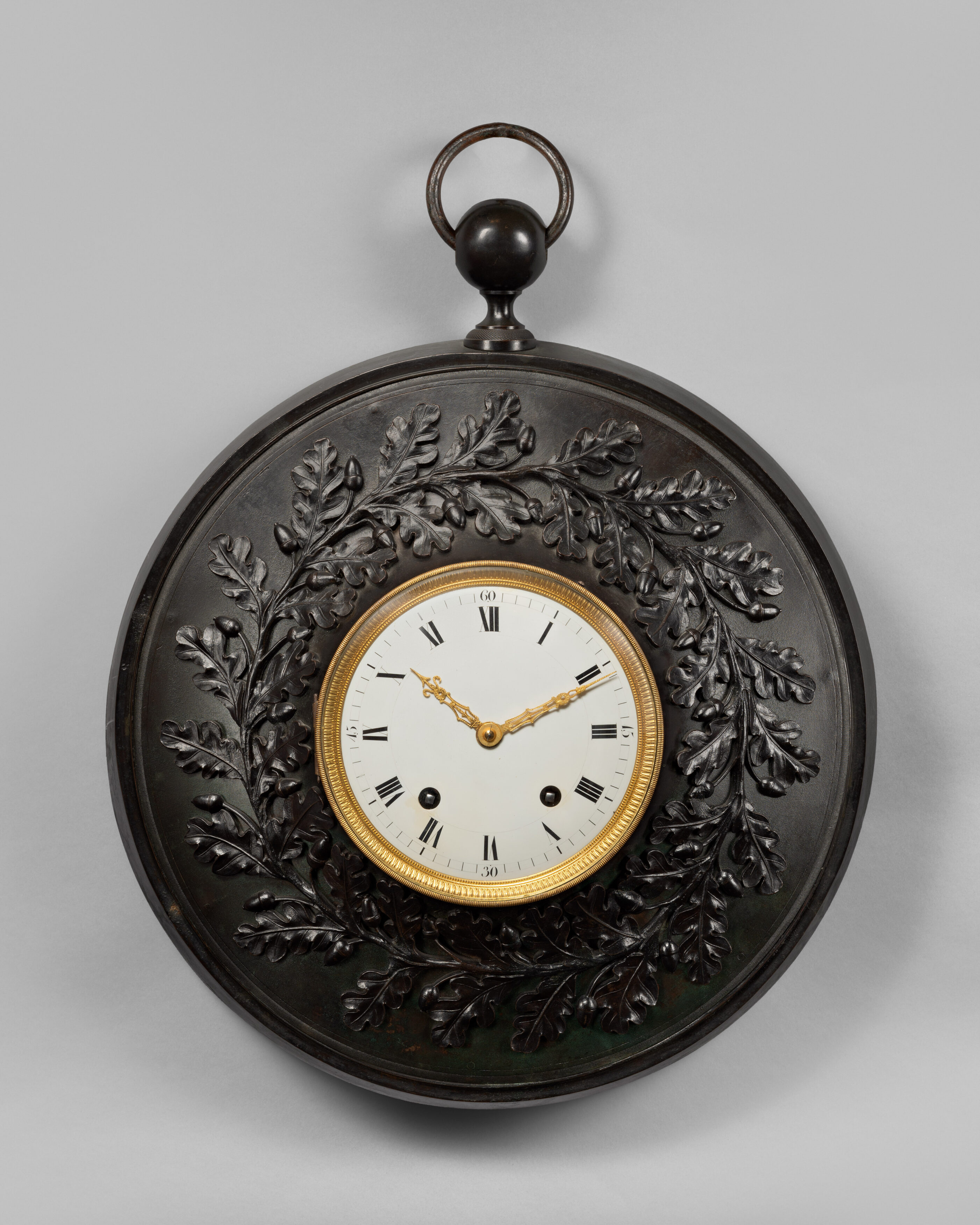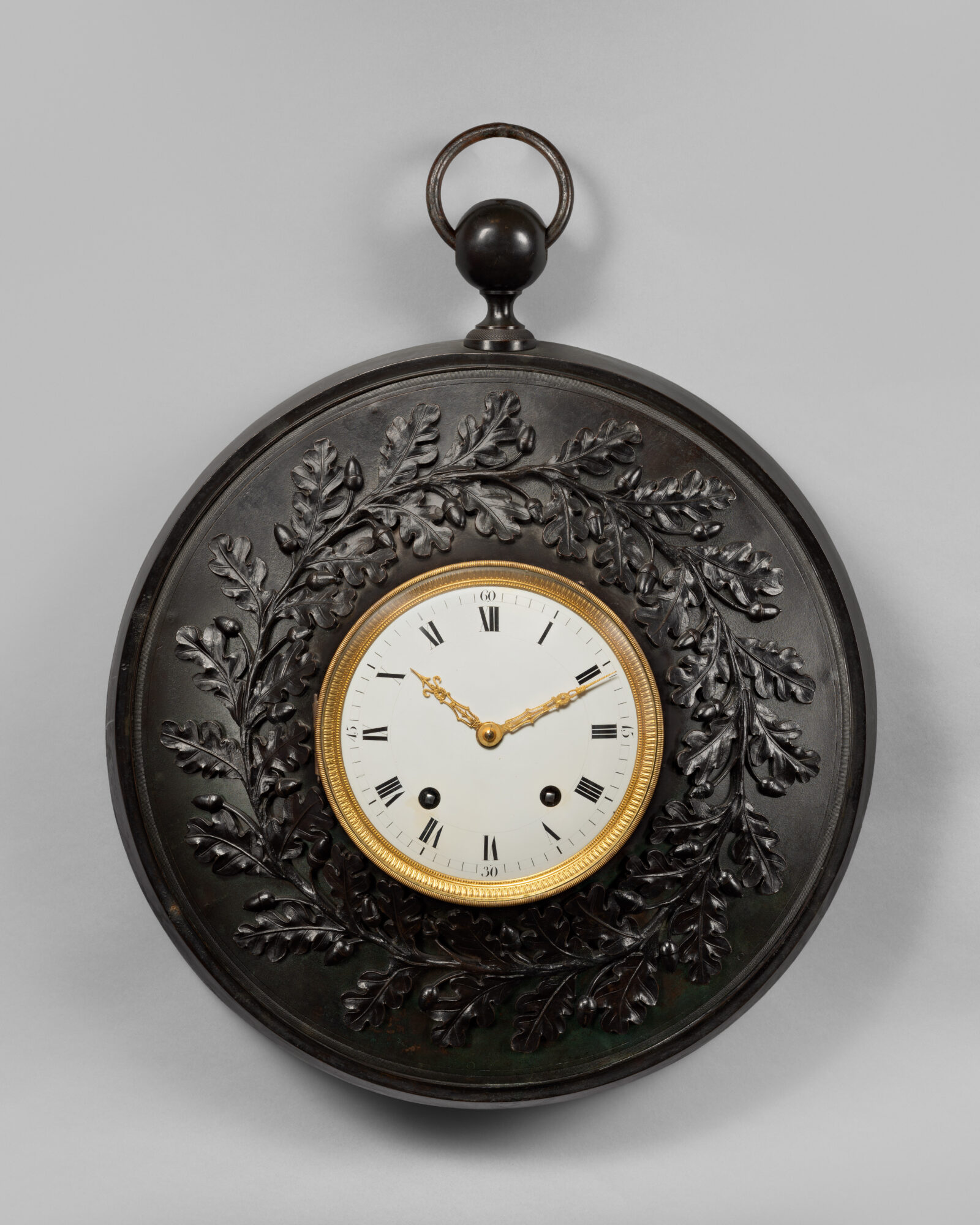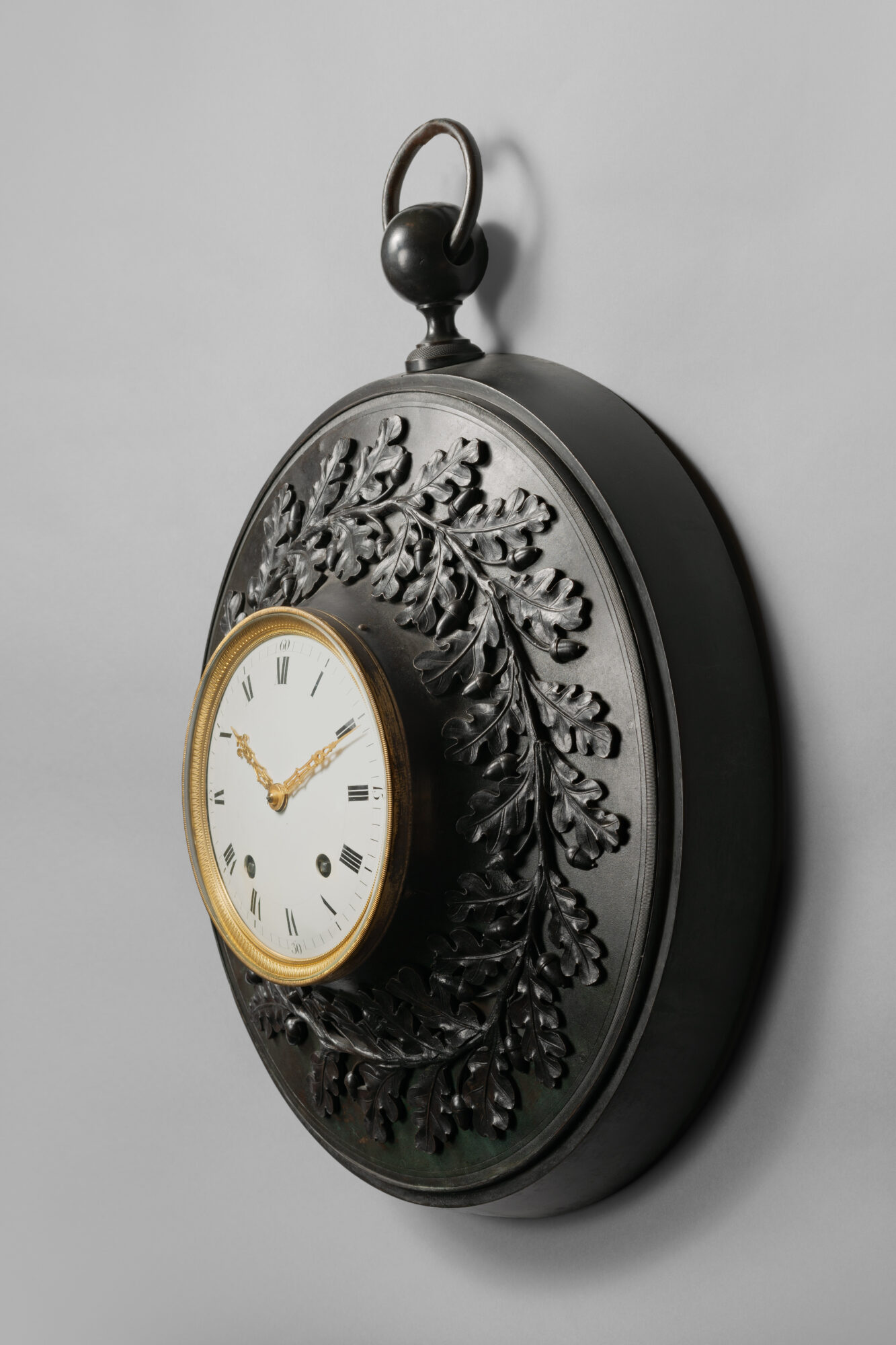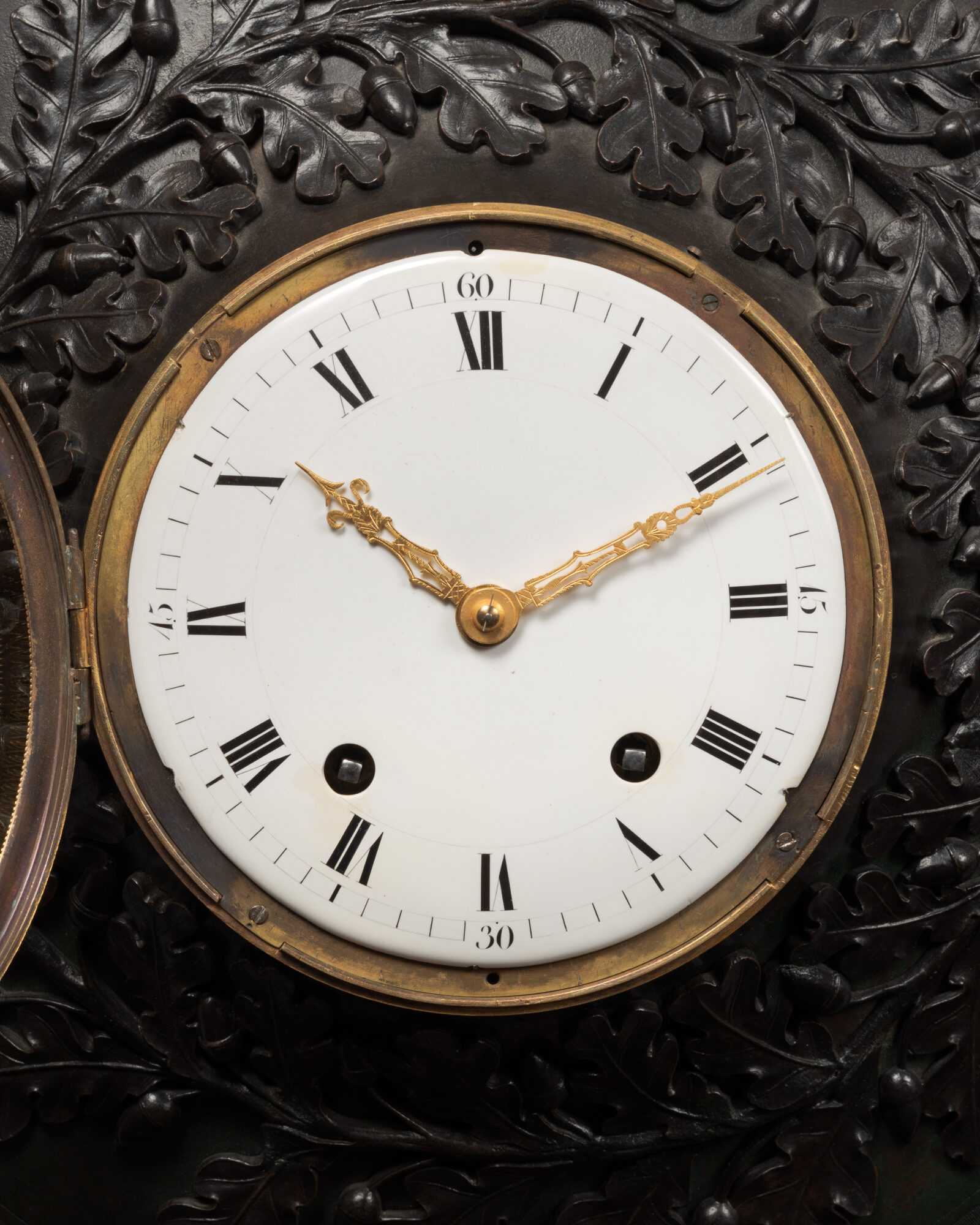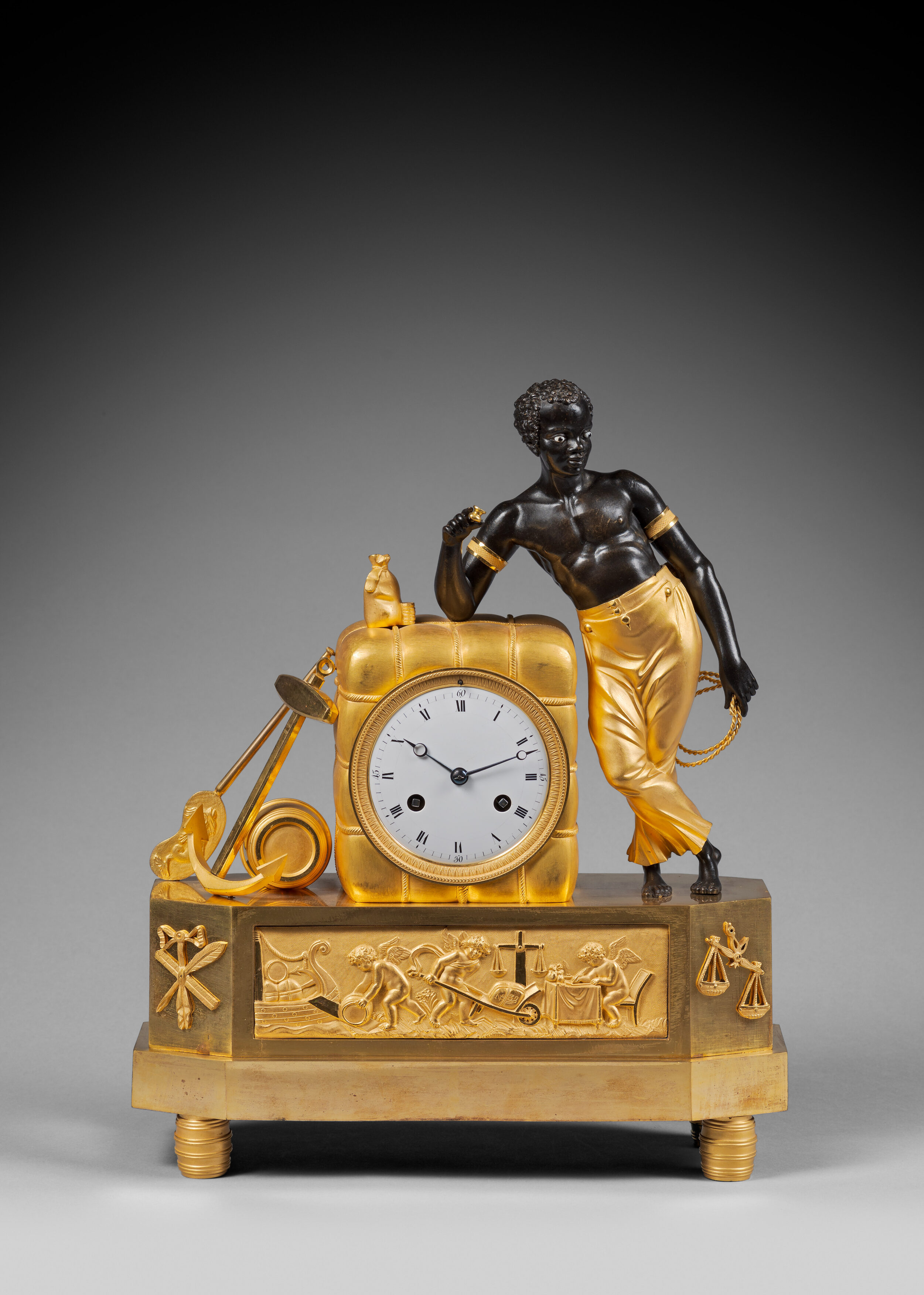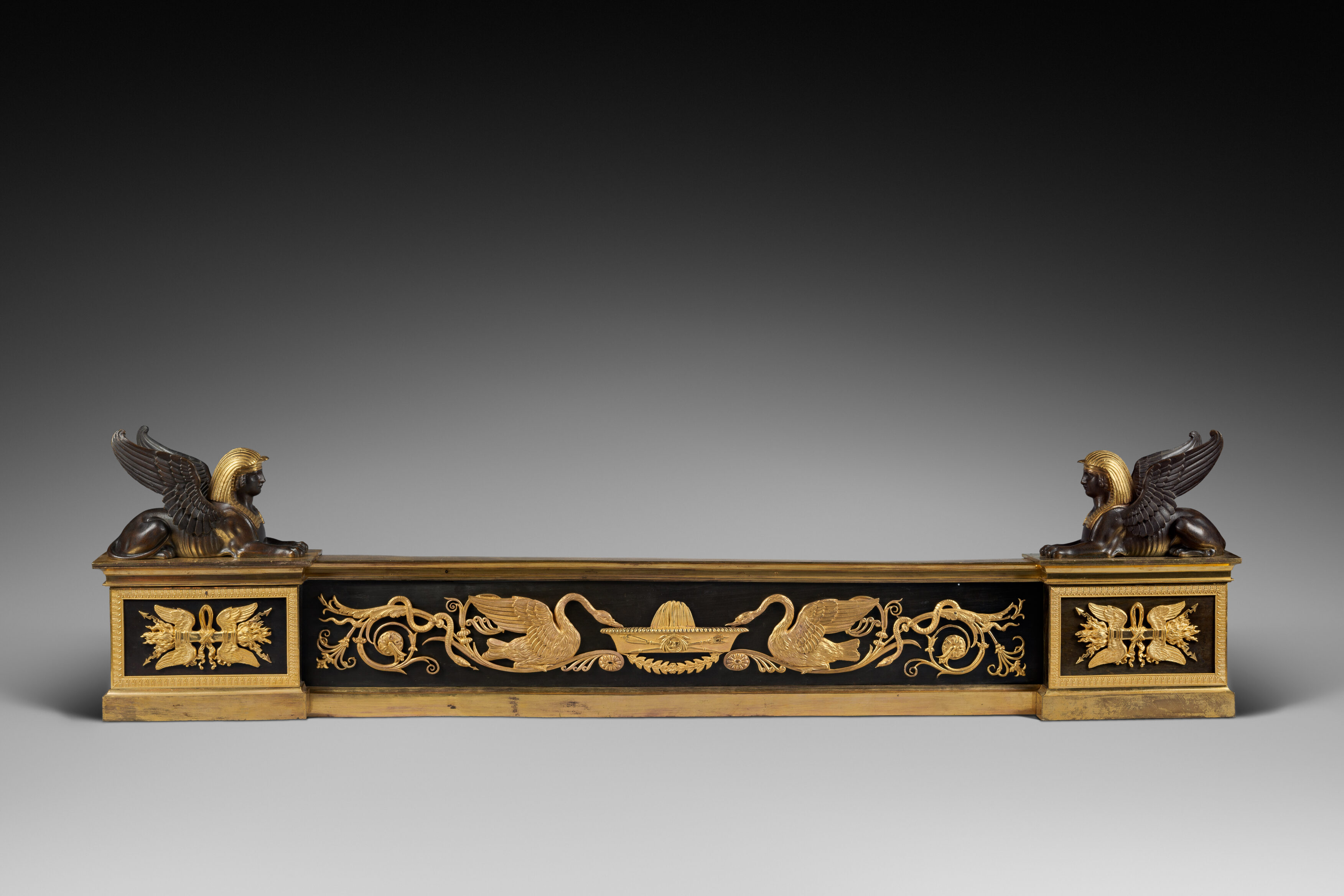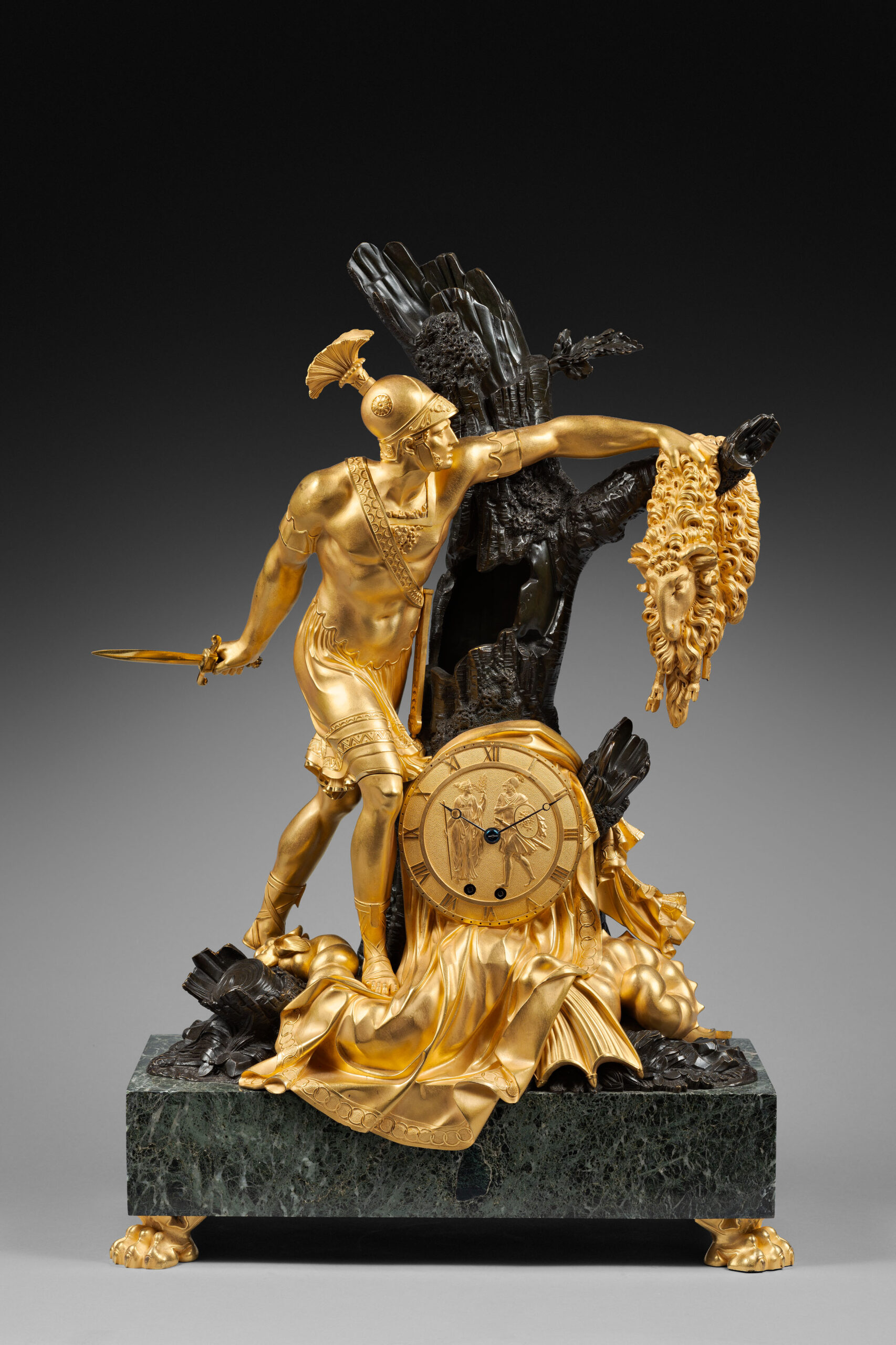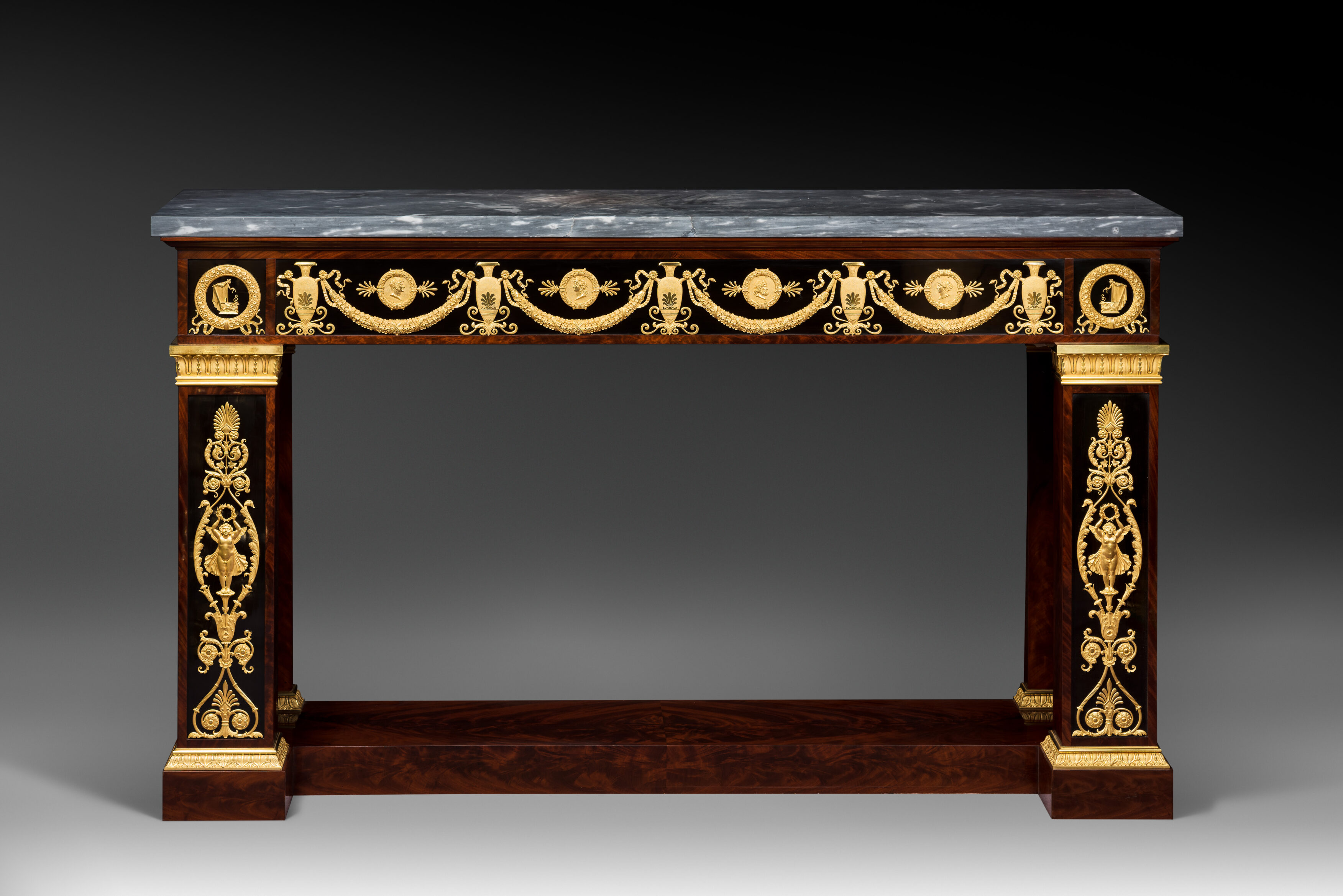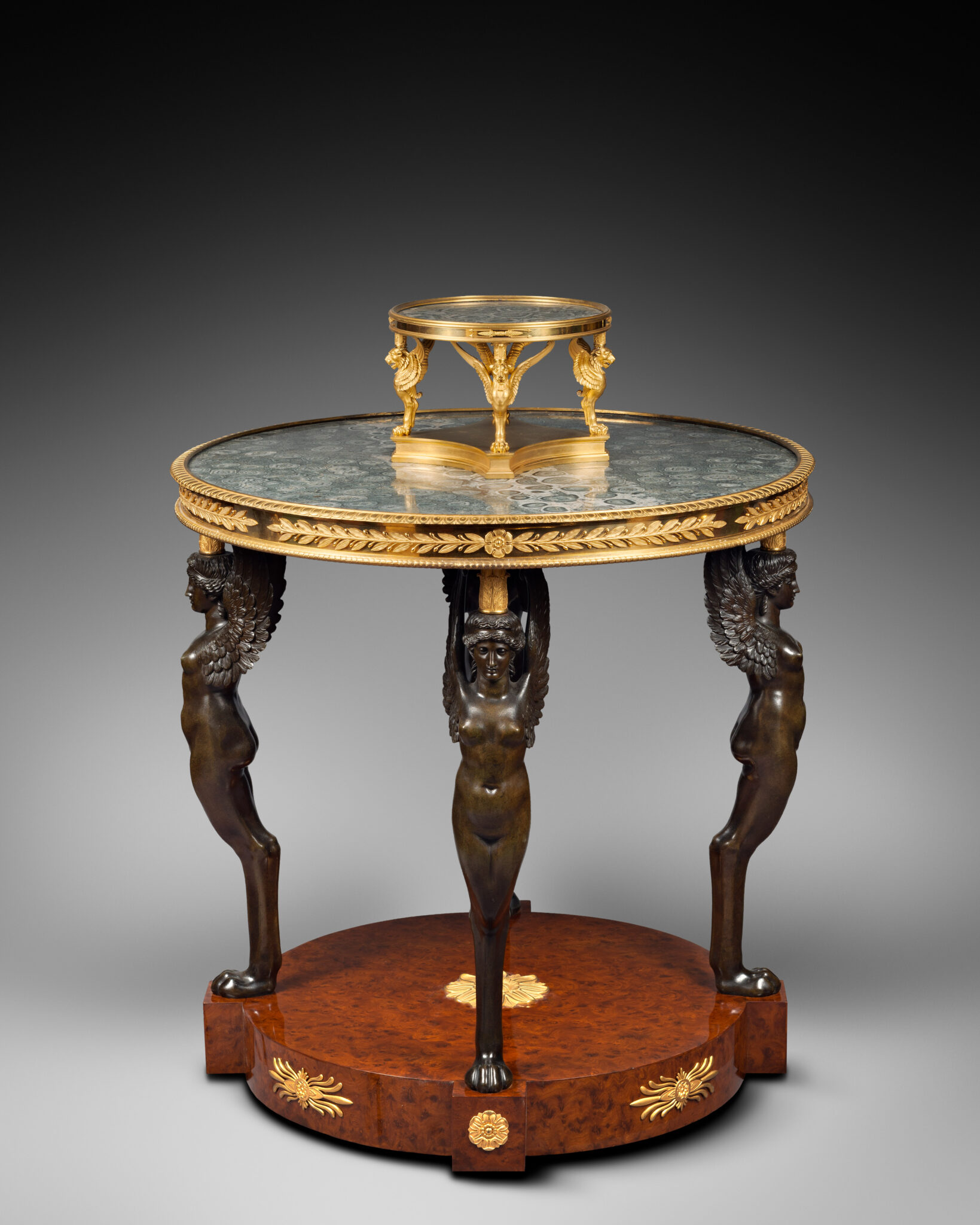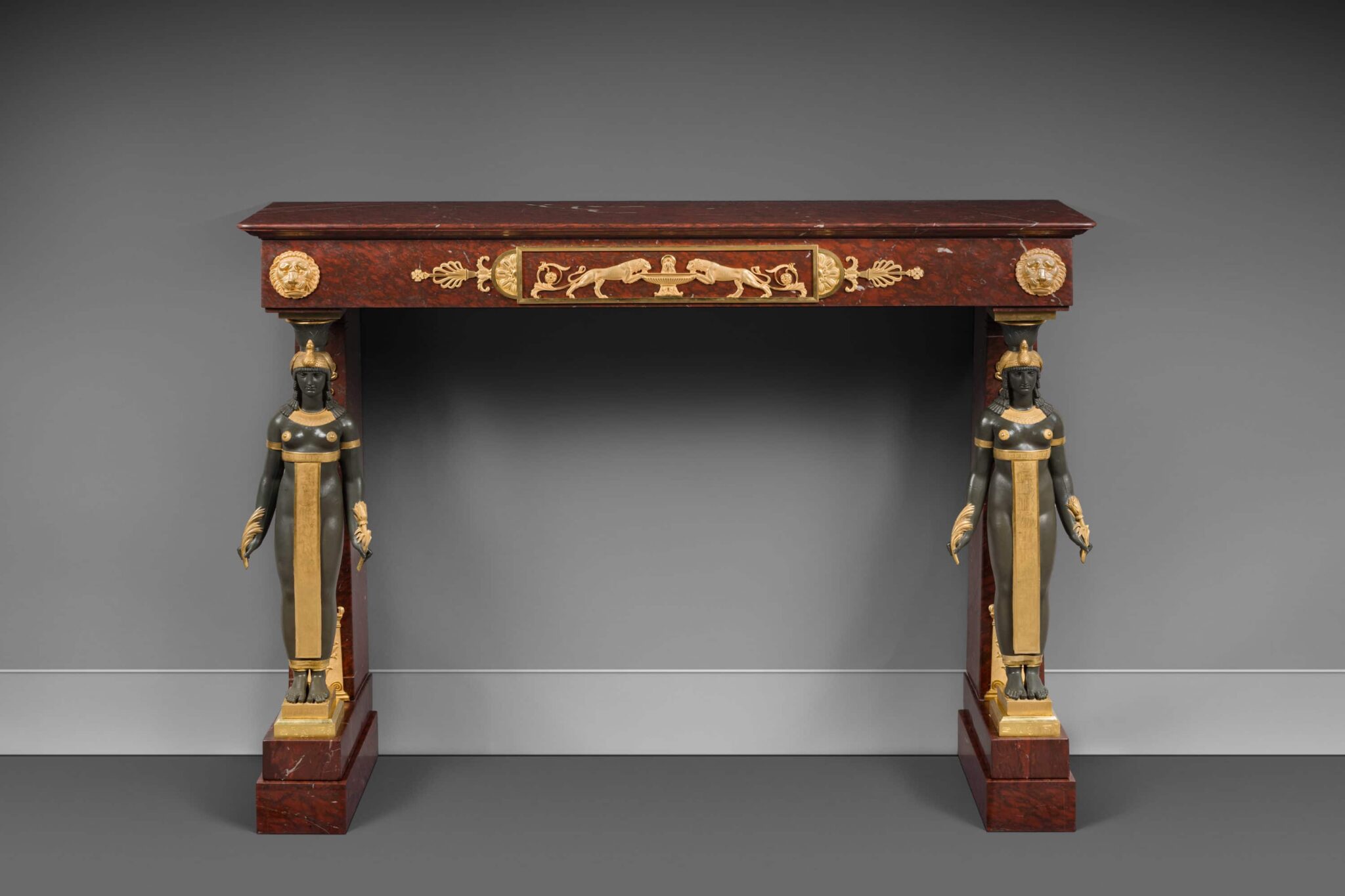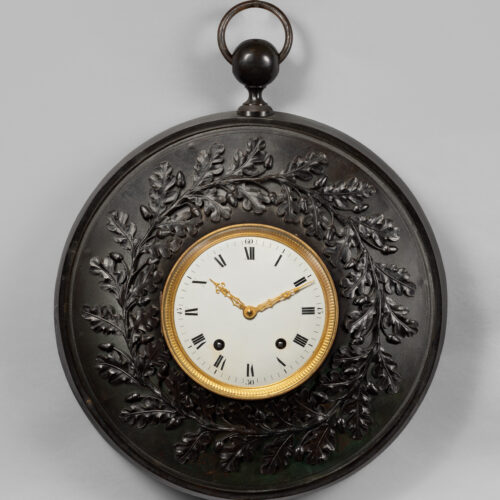Rare Gilt and Patinated Bronze Œil-de-bœuf Wall Cartel
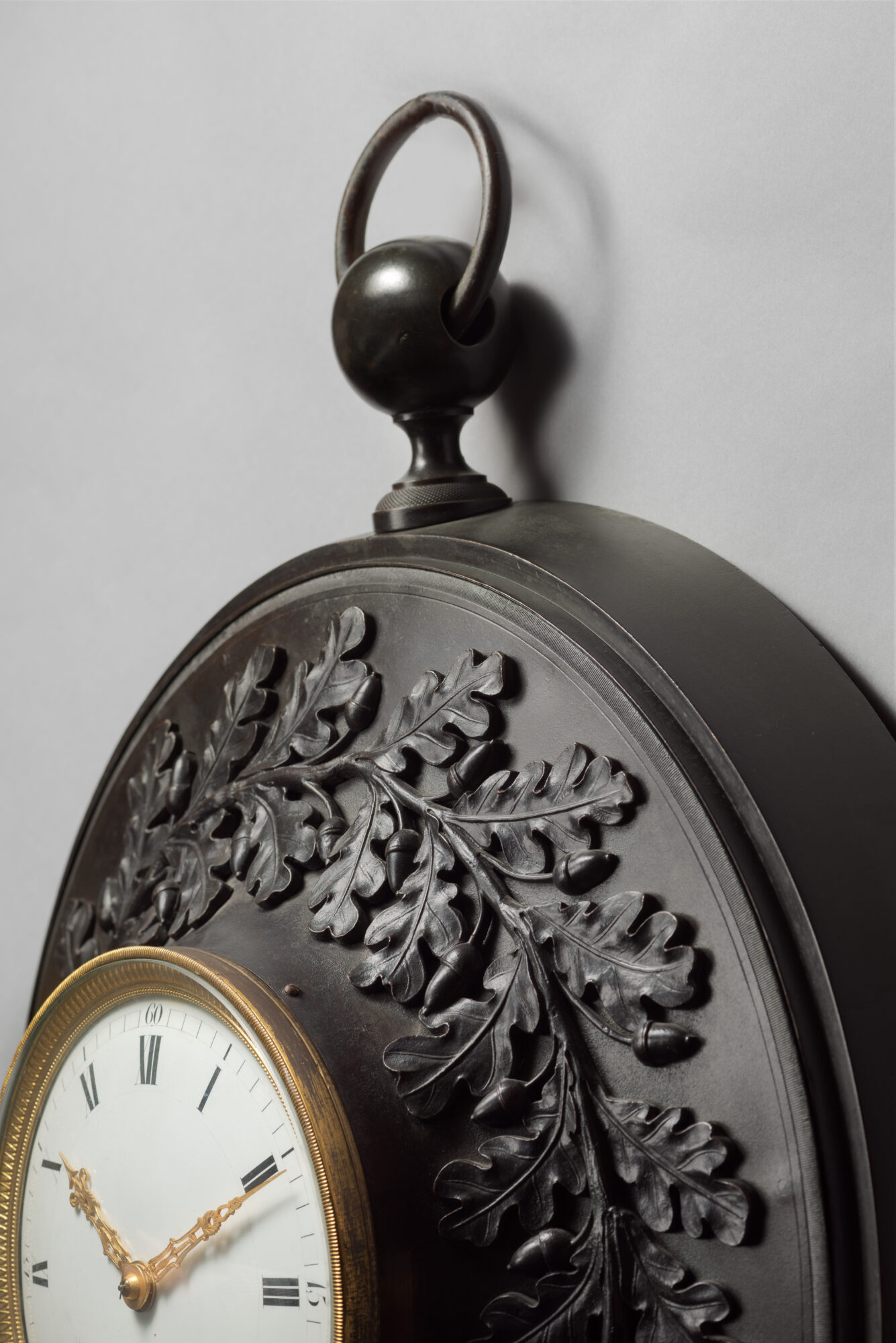
Case attributed to bronze-caster Pierre-Philippe Thomire
Paris, Empire period, circa 1805-1810
The round white enamel dial indicates the Roman numeral hours and Arabic numeral fifteen-minute intervals by means of two pierced and engraved gilt bronze hands. The hour and half-hour striking movement is housed in a circular case made entirely of finely chased gilt and patinated bronze. The bezel is adorned with waterleaf friezes, beads and rope friezes; the mechanism is housed in a round œil-de-bœuf case adorned with branches with oak leaves and acorns; the outer border is decorated with a mille-raie motif; the sphere containing the mobile hanging ring rests on a tapering pedestal with knurled knop.
During the Empire period, wall cartels became much rarer, for Parisian horology of the time favored clocks adorned with mythological and historical figures. Several types of cartels were produced, including a shield-shaped model, an example of which was delivered by Lepaute in 1809 for the topographic salon of the Grand Trianon (see D. Ledoux-Lebard, Le Grand Trianon, Meubles et objets d’art, RMN, Paris, 1975, p. 137). Another type of cartel takes the form of a medallion suspended from a scarf. One such example, which is in the Mobilier national in Paris, is illustrated in M-F. Dupuy-Baylet, De bronze et de cristal, objets d’ameublement XVIIIe-XIXe siècles du Mobilier national, Editions Faton, Dijon, 2020, p. 58, catalogue n° 14). The present clock, which takes the form of an œil-de-bœuf, was inspired by an 18th century sketch of traveling watches; it is remarkable due to its decoration featuring oak branches that symbolize strength. This may be a reference to the emperor. A comparison may be made with an œil-de-bœuf cartel by Lepaute whose composition is much simpler, for it is adorned only by applied stars. An example is illustrated in Tardy, La pendule française des origines à nos jours, 2ème Partie : Du Louis XVI à nos jours, Paris, 1974, p.420, fig.6.
Pierre-Philippe Thomire (1751 - 1843)
Pierre-Philippe Thomire was the most important Parisian bronzier of the last quarter of the 18th century and the first decades of the following century. Early on in his career he worked for Pierre Gouthière, ciseleur-fondeur du roi, and toward the mid-1770’s began working with Louis Prieur. He later became one of the bronziers attached to the Manufacture Royale de Sèvres, creating the bronze mounts for most of the important creations of the day. After the Revolution, he purchased the stock of Martin-Eloi Lignereux, thus becoming the most important suppliers of furniture bronzes for châteaux and Imperial Palaces. In addition, he worked for a wealthy private clientele, both French and foreign, including several of Napoleon’s Marshals. Thomire retired in 1823.
